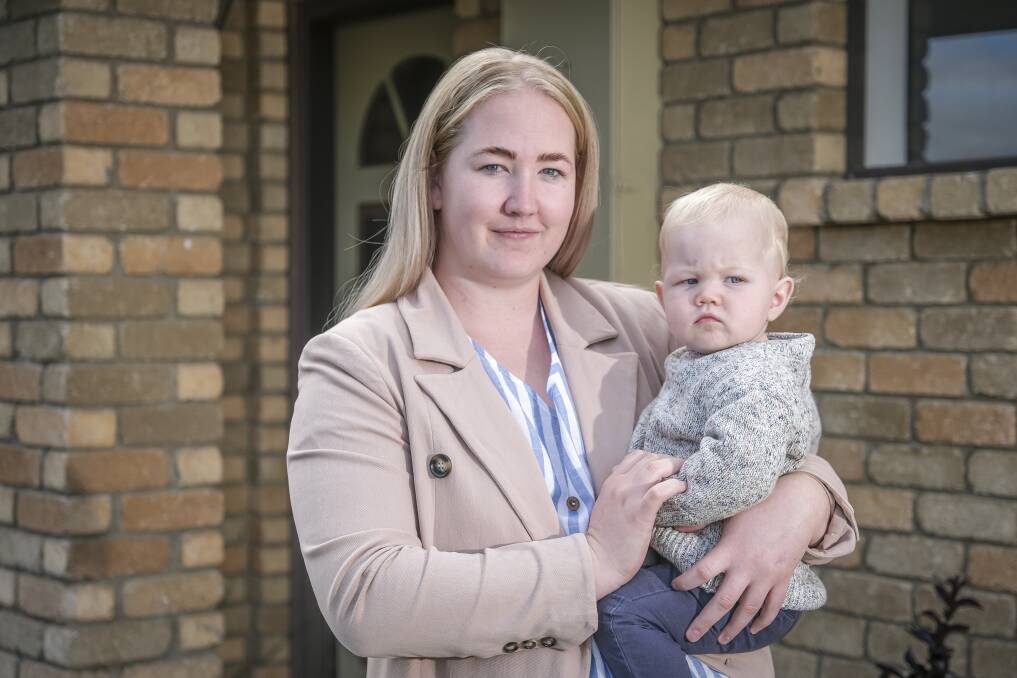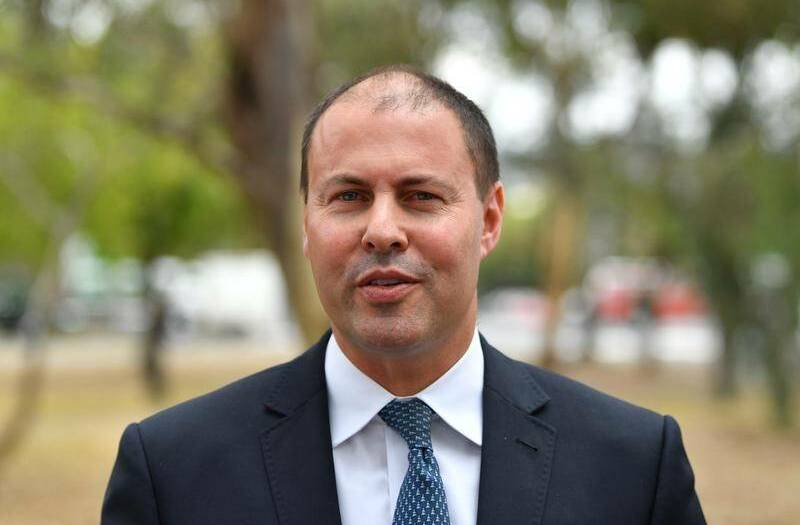
North and North-West families and carers most impacted by the federal government's childcare subsidy have queried whether it will aid the childcare system in the region.
Subscribe now for unlimited access.
$0/
(min cost $0)
or signup to continue reading
Longford mother Samantha Bailey, 23, had been looking for a childcare option for her 12-month-old son Easton as she tried to get back into the workforce.
"I'm left with no care for my son. I've called 12 different centres and there are no spots available for nursery room children," she said.
IN CASE YOU MISSED IT: Old or new: Launceston's great streetscape debate
Her partner was a fourth-year carpentry apprentice and she said being able to work would supplement the household income to a more reasonable level.
Ms Bailey was offered a job but had to turn it down as a result of the lack of childcare.
"I'm not the only one in this situation. Mums [across Launceston] are all screaming out for care."
Ms Bailey said she was disappointed with the childcare subsidy changes as they did not help her or other parents in the same situation as her, and would not make any inroads into the lack of childcare facilities in the North of the state.
What's in the budget?
The federal budget, formally announced on Tuesday night, positioned the childcare subsidy as the centrepiece of a targeted plan to get women back to work.
It included a change that meant any household earning less the $130,000, as well as with two or more children under five, would be able to have more of their childcare subsidised.
Australian Childcare Alliance president Paul Mondo said the subsidy was aimed at a very specific group of people who were seen as the most likely to be able and willing to contribute hours to the workforce.
He said as it was, having two children needing childcare provided a major disincentive to a carer looking to return to the workforce.
Treasurer Josh Frydenberg said the investment was "targeted" to make childcare more affordable but also increase workforce participation.

"The investment will add up to 300,000 hours of work per week which would allow the equivalent of around 40,000 individuals to work an extra day per week," he said.
The changes will come into effect on July 1, 2022.
North and North-West
In Bass and Braddon the average number of children in a family was 1.8.
Households in Braddon, on average, earn about $51,000 a year and in Bass they take home just under $55,000.
Across Tasmania 1.8 per cent of families used approved childcare for an average of 14.5 hours each week.
Evidently, the subsidy had the potential to reach countless families in these regions.
Mr Frydenberg's numbers were based in a national context, and Ms Bailey's concerns about how relevant they were to the North and North-West of Tasmania were not alone.
Across countless North and North-West families and providers, the problem with childcare was equally about availability as it was about cost.

Northern Childcare Network, which operated statewide, provides family day care services in the North and North-West.
Family day care is an option where providers operate a childcare service from their own home, as opposed to from a centre.
NCN family day care unit coordinator Caitlin Heyward said the lack of child care spaces across the North and North-West was clear from the NCN's perspective.
We have a lot of families calling up looking for care placements but we have a lot that we just can't place because we don't have spaces for them.
- Caitlin Heyward, NCN family day care unit coordinator.
"Families call and we sometimes have to refer them onto other services because we can't place them. Some of our educators have waiting lists or families who are hoping that a space becomes available."
Ms Heyward said this was due to an abundance of families needing childcare, but also a lack of potential family day care educators putting up their hand to provide the service.
She said she believed there was a lack of awareness that family day care was an option, and rightfully strict requirements for potential family cay care educators were a deterrent.
With the potential for the subsidy to bring about an increase in children needing care, Ms Heyward believed the situation has the potential to become even more frustrating once it kicked in.
I don't think it will solve the problem in Tasmania.
- Caitlin Heyward, NCN family day care unit coordinator.
"But it will certainly provide some financial relief to some families.
"The demand for care is already there but we just don't have the spaces to accommodate the increase in demand.
"I think we'll find that [childcare] centres and family day care placements will fill up a lot faster, but the demand far outweighs the spaces available."
Taylah Ralph was an example of the exact person the subsidy was aimed at. The Launceston based mother had a two-year-old son and a nine-week-old daughter.
When the subsidy kicks in from the middle of 2022 she will be looking to have both children in childcare.
Like Ms Bailey, she had difficulty getting her son into childcare. She said both childcare centres and family day care options in her area were full.
"We were looking for around two months until we got a spot as well as being on waiting lists at around 10 centres," she said.

However, she was thankful for the existing subsidy and welcomed the upcoming changes for when she is able to place both children in care.
North-West mother Bianca Hathaway, who lived in Port Sorell, was also in the situation where the subsidy would benefit her.
Her two children, Oliver and Eliza, were three and two-years-old.
Her eldest child currently attends childcare at a centre one day a week, but her preference was for him to be in family day care, she just could not find a spot.
Ms Hathaway said she also had difficulty finding him a spot at the childcare centre.
Ms Hathaway said, regardless of the subsidy changes, she would have placed her second child into care.
"I'm probably in a different situation to most being able to afford to stay home but I think the increase in the subsidy will make a huge difference to some families for sure."
She said she would not be looking to return to the workforce, other than perhaps casually, until both her children were at school.
Our journalists work hard to provide local, up-to-date news to the community. This is how you can continue to access our trusted content:
- Bookmark www.examiner.com.au
- Make sure you are signed up for our breaking and regular headlines newsletters
- Follow us on Twitter: @examineronline
- Follow us on Instagram: @examineronline
- Follow us on Google News: The Examiner
What do you think? Send us a letter to the editor:



